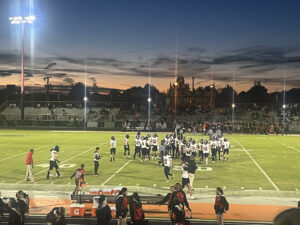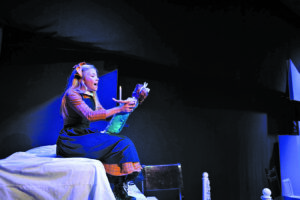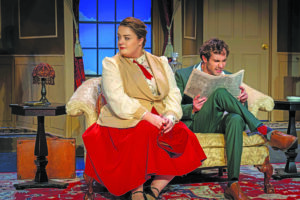
Dr. Jerome Thomas Barrett, a lifelong learner, amateur boxer, sailor, mediator, world traveler, marathon runner, author, civic activist and archivist with an enduring zest for life, an endless supply of stories and an infectious smile, died Nov. 5 of complications from lymphoma.
He was 87.
Jerry loved his wife, Rose, root-beer floats, the Minnesota Twins, his 1976 MG Midget and hiking, biking and sailing with his five boys and five grandchildren.
An avid athlete, he completed numerous marathons and suffered several broken bones from various sports-related mishaps, including a broken jaw while jogging at age 83. He was still walking an hour a day five weeks before his death. He was Minnesota nice with a little bit of spice. On his calf was a skunk tattoo.
Born Dec. 29, 1932, in St. Paul, Minnesota, Jerry was the fourth of 11 children of Henry and Ann Barrett. He was an indifferent student with a mean left hook at Cretin High School when he fell in love with a smart, pretty girl from rival Harding High. Rose and Jerry married at 19 on Sept. 6, 1952.
They had their first four boys while Jerry served in the boiler room of the U.S.S. Conway during the Korean War and completed his BA at the College of St. Thomas in St. Paul. He worked nights as an operating engineer at Hamm’s Brewery, Como Park Zoo and an asphalt plant among other places.
After graduating, Jerry climbed the ladder of state and federal mediation jobs mediating labor-management disputes in Detroit, the Twin Cities, Milwaukee and Chicago, moving the family five times in 10 years, before landing in the D.C. suburb of McLean in 1969.
Along the way, Jerry completed a master’s degree in Industrial Relations at the University of Minnesota and wrote the first of many articles about the history and art of mediation, including one on common mediation tactics that caught the eye of his bosses. The paper also led to ribbing by union officials, who would ask if he was trying technique 20 or 27 in the middle of a negotiation.
In Washington, Jerry worked for the National Center for Dispute Resolution, where he applied mediation techniques to civil rights disputes and Vietnam War protests. Then at the Department of Labor, he trained local and state governments and their unions in the emerging field of public-sector collective bargaining. Later, as a senior official at the Federal Mediation and Conciliation Service, he mentored multiple classes of interns and developed new techniques that broadened the scope of mediation to foster a spirit of cooperation between labor and management.
While at FMCS, Jerry began collecting materials, some fished from a dumpster behind the building, for an archive he lovingly maintained for nearly 40 years, eventually launching a foundation, The Friends of FMCS History, to help support the work.
In the early 80s, Jerry taught for two years at Northern Kentucky University while completing his dissertation for a doctorate in education at George Washington University. He then returned to Washington to work at the Labor Department, where he developed pioneering training models in the new field of Alternative Dispute Resolution.
He also visited more than 30 countries from Brazil to Zimbabwe training local businesses and unions on successful negotiations.
After retiring from the government, Jerry had a successful business as an arbitrator and consultant, wrote numerous books and articles and continued to gather material for his FMCS archive, housed in several rooms in an office building near his home.
In 2012, Jerry donated the entire archive, along with 200 taped oral histories he conducted of leaders and rank-and-file members of the FMCS, to George Washington University’s Special Collections. The material covers 136 shelf feet and includes 120 articles and published papers and six books he wrote or co-wrote, including “A History of Alternative Dispute Resolution: The Story of a Political, Social and Cultural Movement.”
In his adopted home of Falls Church, Jerry served for eight years each on the boards of the local school system and Northern Virginia Community College. He founded two 5k races and was learning to be a cameraman at age 85 after settling a dispute at the local public access channel.
Jerry also followed Rose as board president at their beloved Park Towers Condos. With Rose supervising, and Jerry wielding a shovel, they planted flowers, trees and shrubs all around the building. He especially relished chopping down the crepe myrtle trees by the pool, to the horror of fellow board members who had declined to listen to his arguments about why it was necessary, only to watch them grow back, thicker and more beautiful than ever.











